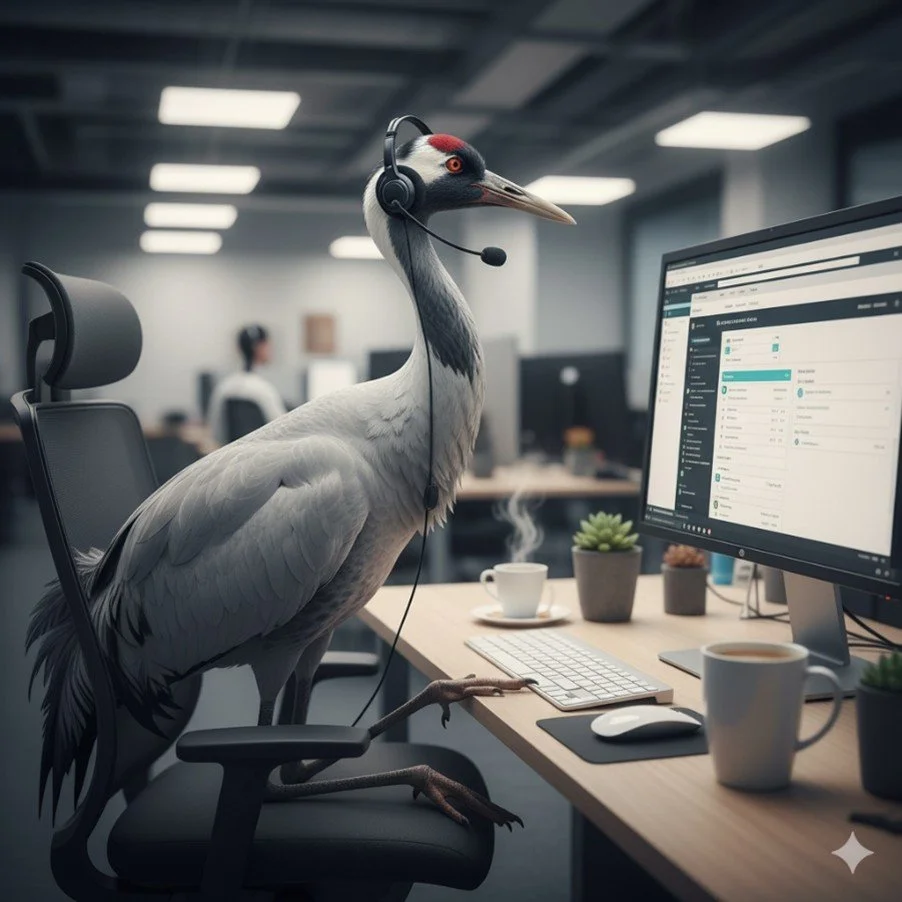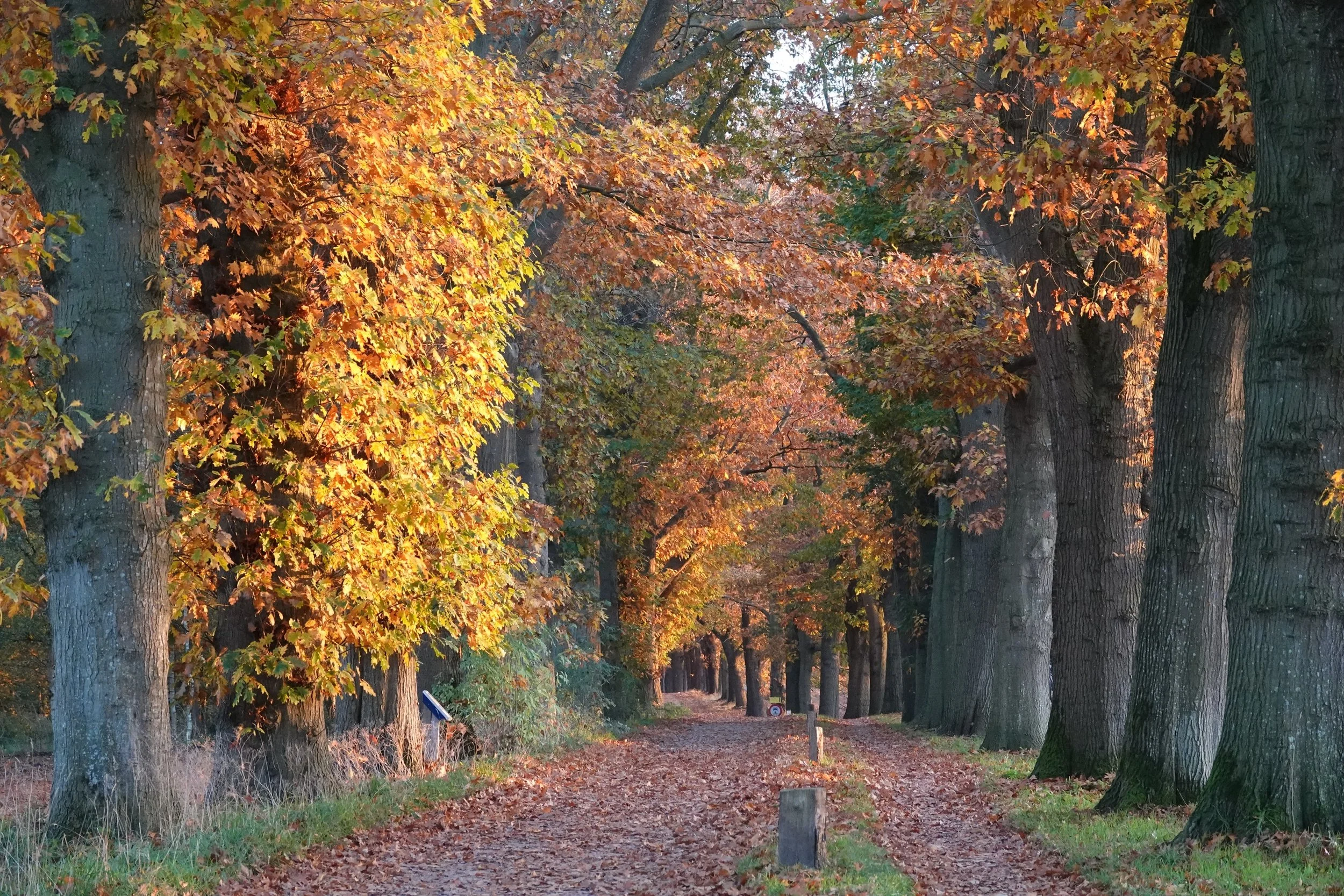AUTUMN CRANE MIGRATION, THE BRAND-NEW VIRTUAL CRANE, AND HOW YOU CAN GET INVOLVED
From the desk of Dr. Koen de Koning: Latest news & insights
A Look Ahead at the Autumn Migration
The autumn migration is already in full swing. Most cranes have long since left their breeding grounds in Scandinavia and crossed the Baltic Sea to their well-known resting sites in northern Germany: Rügen, Diepholz, and Rhin-Havelluch near Berlin. Here, most cranes usually stay for several weeks to regain their strength before continuing on to France and, eventually, across the Pyrenees to their wintering grounds in Spain.
Exactly when they begin this great journey in large numbers depends on several factors. First of all, there are natural differences between individuals – some groups set off for Spain earlier than others. The first groups have already appeared on the radar during their southward migration (see image), and the first cranes have even been spotted arriving in Spain. At the other end of the spectrum are the cranes that try to avoid the long, exhausting journey south by overwintering in northern Germany. This is only possible if the winter stays mild and enough food remains available. With the increasingly mild winters of recent years, this group of overwintering cranes has been steadily growing.
That brings us to the big question – when can we expect a mass migration? And under what conditions? In other words, what should you be looking out for in the coming weeks? A small clue lies in the reason some cranes remain in Germany: the cold – or rather, the lack of it. As soon as the nights turn colder and frost sets in, many cranes will continue southward in search of warmer climates. Last Saturday, frost was recorded in Diepholz for the first time this autumn, prompting many cranes to depart. But there’s more: food availability also plays a crucial role in determining their departure. Initially, cranes need plenty of food to recover from their journey from Scandinavia. That’s the stage we’re in right now. This means that many cranes are still staying in northern Germany to regain their strength. Later in the year, as food in the resting areas becomes scarcer, cranes feel an increasing urge to continue southward. Finally, weather and wind play an important role. Bright, sunny weather and a tailwind are major incentives to take off (Saturday was a good example). Anyone who’s ever ridden a bike can relate – it’s always nicest with good weather and the wind at your back. For cranes, it’s not just a matter of comfort but of survival, helping them avoid exhaustion or drifting off course. The weather forecast for the coming days, however, looks unfavorable: strong headwinds, clouds, and rain. In dense fog and low cloud, cranes can even fall victim to collisions with trees, masts, or buildings.
Most cranes will therefore wait for the perfect conditions before continuing their migration: clear skies, a north-easterly wind, and frost at night. The peak migration over the Netherlands and Belgium usually occurs between late October and early November, depending on the weather. We’ll be keeping a close eye on the conditions and will post an update when a peak is expected. In the meantime, be sure to check the Crane Migration Radar daily to stay up to date in real-time!
Talk to a Virtual Crane
Chat soon with our Virtual Crane for all questions about crane migration.
This autumn also marks an exciting new development on the Crane Migration Radar platform. We are launching the so-called “Virtual Crane” – an AI-powered fictional crane you can chat with 24/7 to ask questions about crane migration, crane ecology, or anything else you’d like to know about crane life.
We’ve gathered as much relevant and reliable information as possible to ensure our AI chatbot provides answers based on trusted knowledge. We’ve also added a touch of personality to make it feel as though you’re talking to a real crane! It’s great fun for children too – perfect for keeping them entertained during the Christmas holidays.
Of course, you can always contact us if you’d prefer to speak with a real expert. However, our human experts may not respond quite as quickly as our industrious call-centre crane!
Help Shape the Crane Migration Radar and Contribute to Science
The Crane Migration Radar has not come about by chance – it is the result of extensive scientific research into crane flight behaviour, the effects of weather and wind on migration, and the technology behind it all. How do you build a mathematical model capable of mapping crane migration live, in real-time?
During an interactive co-creation session, we will take participants behind the scenes to explore the science underpinning the Crane Radar and discuss how this knowledge can be used more broadly to help protect nature. We would also like to talk to Crane Migration Radar users about how we can further improve the user experience.
Interested? Then the Crane Radar Co-Creation Session might be just the thing for you! You can register free of charge for the first of three sessions, taking place on Friday, 21 November, at the Sallandse Heuvelrug, the largest area of forest and heathland in Overijssel.
Help us keep the Crane Radar flying!
We are amazed by how many of you use and love the Crane Migration Radar – your support means everything. Behind the scenes, a small team of volunteers keeps it running and improving to help protect these incredible birds. To keep the radar alive and growing, we need your help. Any tax-deductible donation, big or small, makes a real difference in ensuring the radar continues to operate and evolve.
Thank you for being part of this journey with us. Together, we can keep tracking, learning, and protecting these magnificent birds.





